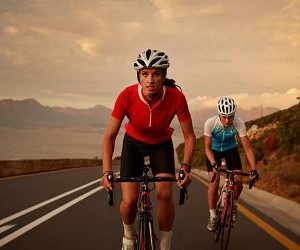Learn how to deal with punctures on long rides with prevention tips, repair techniques, and smart gear choices to keep rolling without stress.
HOW CAN I BACK A BREAKAWAY SPECIALIST USING IMPLIED-PROBABILITY THRESHOLDS?
Backing a breakaway specialist in cycling requires more than gut feeling—it’s about recognizing tactical race dynamics and applying probability-driven analysis. Implied-probability thresholds help bettors identify when odds reflect true value versus when the market is overvaluing or undervaluing a rider. This guide explains how implied probability works, what factors increase a breakaway rider’s chances, and how to build betting thresholds that manage risk. You’ll learn how to combine race profiles, rider form, and market inefficiencies into a disciplined strategy that maximizes returns over time.

Understanding implied probability
Implied probability is the percentage chance a bookmaker’s odds assign to an outcome. Converting odds into probability allows bettors to measure whether a price represents value. For example, decimal odds of 10.0 imply a 10% chance of winning. If your analysis suggests the rider’s chance is closer to 15%, then you’ve found positive expected value.
How to calculate implied probability
The formula is simple: Implied Probability (%) = (1 / Odds) × 100. This applies to decimal odds; for fractional or American odds, conversions are required. Understanding this baseline allows bettors to spot discrepancies between bookmaker pricing and personal projections.
Odds of 5.0 = 20% implied chance.
Odds of 20.0 = 5% implied chance.
Odds of 50.0 = 2% implied chance.
Why breakaway specialists matter
Breakaway riders thrive in chaotic stages where teams miscalculate chase dynamics. Their odds are often long because winning from a break is rare. However, certain profiles—mountain stages, medium climbs, or transitional days—dramatically increase their success rates. By using implied probability, bettors can filter overpriced longshots from genuine opportunities.
Applying thresholds to breakaway betting
The key to profitable betting isn’t predicting every winner—it’s consistently finding value. Implied-probability thresholds act as decision filters. Bettors set a minimum probability where they’re willing to back a rider, based on historical breakaway success rates and stage characteristics.
Setting probability thresholds
Breakaway wins occur in roughly 10–20% of Tour de France stages, though rates vary by profile. If a rider’s odds imply a 2% chance but you estimate 6%, that represents strong value. Creating thresholds—say, only betting when your projected chance is double the implied—protects against chasing hopeless bets.
Flat sprint stages: Breakaway success <5%—avoid unless odds are extreme.
Medium mountain stages: 15–25% success—prime ground for specialists.
High mountain stages: 10–15% success depending on GC dynamics.
Transition stages: High unpredictability, value-rich for opportunists.
Identifying market inefficiencies
Bookmakers often shade odds toward well-known names, overlooking lesser-known breakaway hunters. Savvy bettors analyze form, team tactics, and stage routes to spot riders who are undervalued. By comparing personal models to bookmaker lines, you can detect when thresholds are breached.
For example, if your model gives a rider an 8% chance and the market implies 3%, betting value exists. If your threshold is at least double implied probability, this scenario qualifies as a green light.
Building a disciplined strategy
Backing breakaway specialists with implied-probability thresholds works only if you apply discipline and data consistently. This means tracking bets, analyzing outcomes, and refining projections over time. Emotion-driven betting destroys bankrolls; probability-driven strategies build sustainability.
Bankroll management
Even with an edge, variance is high. Breakaway wins are rare, so losing streaks are inevitable. Proper bankroll management—staking 1–2% of your roll per bet—ensures survival through dry spells. The Kelly Criterion can further optimize stake sizing based on perceived edge.
Integrating advanced metrics
Beyond odds, riders’ recent data matters: watts per kilo, fatigue resistance, and stage profiles relative to their skill set. Data platforms like ProCyclingStats or team performance analytics can feed into personal models. By weighting these variables, you improve probability estimates and sharpen threshold accuracy.
Use historical win rates of breakaway types (climbers vs. rouleurs).
Account for GC team interest—low GC pressure favors breakaways.
Factor in weather—wind and rain increase unpredictability.
Track team dynamics—multiple riders in a break boost win odds.
Long-term mindset
The biggest trap in betting on breakaways is chasing immediate wins. The strategy works across dozens of races, not single stages. Consistently backing value when thresholds align compounds advantage over time. Like portfolio investing, success comes from probabilistic edges, not single bets.
By setting clear implied-probability thresholds, applying them with discipline, and refining data models, bettors can transform breakaway chaos into calculated opportunity. This blend of cycling knowledge and probabilistic analysis turns what looks like gambling into a structured investment strategy.
YOU MAY ALSO BE INTERESTED






